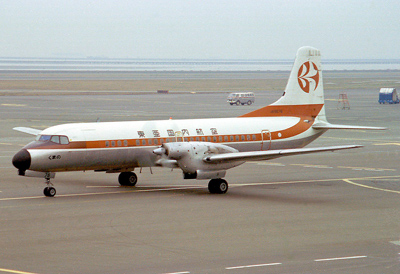Regulation
Halfway the nineteen-sixties Japanese air travellers had a choice of four well-sized companies: ANA, Toa Airways, JAL and Japan Domestic. Both the former two and the latter two had started co-operating and the general belief was that eventually business would be divided over two major airlines. In November 1970 however, reportedly under corporate pressure, the Cabinet adopted a paper declaring that not two, but three major airline companies should serve the countries' airways. With that, this 'Aviation Constitution' dicateded the merger of Japan Domestic Airlines and Toa Airways and this so happened on May 15, 1971. Japan's third major air carrier was logically given the name of TDA - Toa Domestic Airlines (Toa Kokunai Koku).
The 'Aviation Constitution' went even further as it also determined how the market was to be divided. JAL was allowed to serve the international routes, ANA the domestic routes and short-haul international charters and TDA the regional routes. A special case were the 'trunk' routes (Sapporo-Tokyo-Osaka-Fukuoka, in other words the backbone of the country) on which all three were allowed to fly. The whole of this became known as the '45-47 System' because it has been designed in Showa year 45 (1970) and put into effect in 47 (1972) by executive order of the Minister of Transport. The system would be in effect until the end of 1985.
Note: The eras in Japan are based on the governing periods of monarchs. Showa is the period of emperor Hirohito who mounted the throne in 1926, that year thus becoming Showa year 1.
 |
|---|
Carrying a big TDA logo on the tail and broad
red bands on the fuselage and fin base, JA8676 is taxiing on Haneda
when parts of it were still empty. |
Toa Domestic's livery initially consisted of the well-known combination as described before and was later adapted somewhat by changing the blue cheatline into a red one and adding a red band on the lower portion of the tailplane. In 1977 however new colours emerged: the band at window-height was changed into a green lower and a red upper half and continued, diagonally upwards and widening, over the vertical stabilizer. The upper half of the fuselage sported big letters 'TDA' plus the logo and titles in Japanese. Aircraft in service at that time kept these colours as long as Toa Domestic existed.